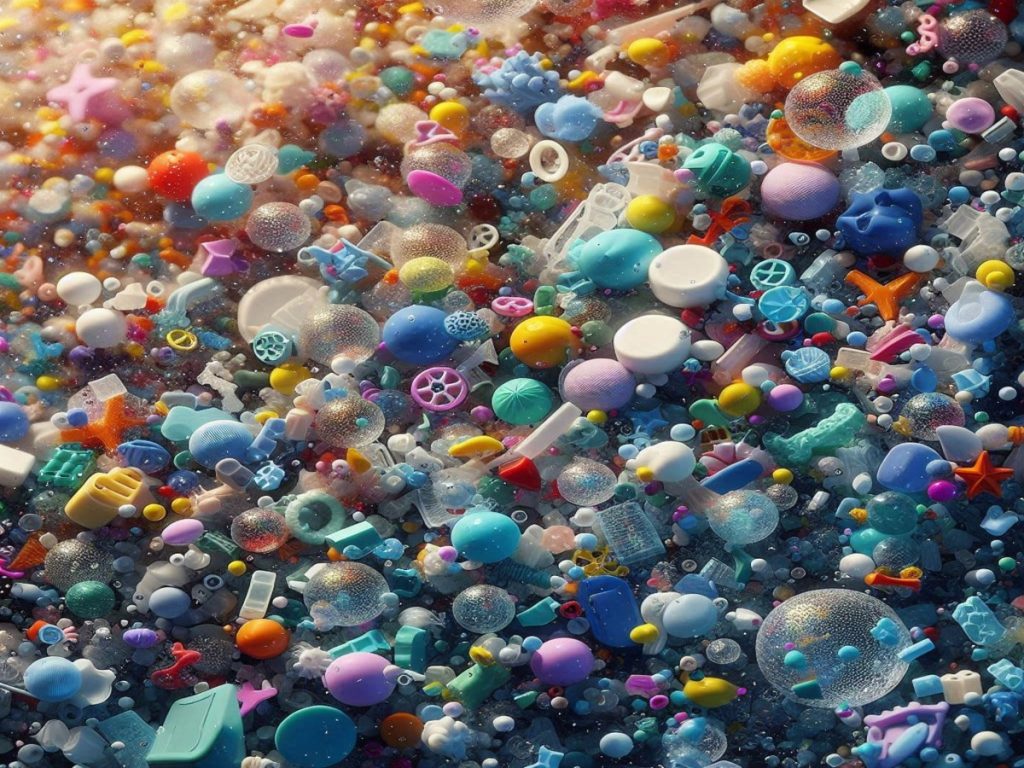Microplastics, what about them? Microplastics in simple terms refer to tiny particles of plastics that are typically less than five millimetres in length.
They amount from the breakdown of large plastics and commercial product development.
Most likely they pose harm to our ocean and aquatic life, as well as to the environment and animal health.
Several experimental studies and researches have shown the involvement of microplastics in the lives of aquatic animals.
We cannot ignore the indispensable advantage that is associated with plastics but microplastics and its interaction with quality of life and safety.
It seems to beg answer to the question – “how safe or exposed are we to microplastics? What is the extent of harm it poses to human health, if any?
Well, those and more are what we are passionate answering in this article.
Categories of Microplastics
Two main categories of microplastics exist, they include:
- Primary Microplastics
- Secondary Microplastics
With primary microplastics, they consist more of tiny particles are tailored for commercial purposes.
Examples of such are: cosmetics, fishing nets, textiles etc.
Secondary microplastics on the other hand encompasses – particles that result from the breakdown of large plastic items, such as plates, cups, water bottles etc.
Breakdown happens when whole plastics are exposed to sunlight, environmental factors, and water.
But this doesn’t just happen in a few days, plastics can take hundreds to thousands of years to fully decompose depending on size and materials used in production — but, it doesn’t quite take that long to wreak havoc on the environment.
They do not readily break down into harmless molecules. But, can be seen with the naked eye around us especially in places like – at beaches.
This was proven by a marine scientist named Richard Thompson, at the University of Plymouth in 2004 after finding piles of rice-sized plastic bits above the tideline on an English beach.
As years came around, more scientists located microplastics around the globe, from the Mariana Trench to the summit of Mount Everest.
They are obvious as tiny multicolored plastic bits in sand.
Potential Threat and Harm from Microplastics
As of today, researchers haven’t concluded on whether consumed microplastics are significantly harmful to human or animal health—and if theh are, what specific dangers they may pose.
But, for aquatic lives inhabiting large water bodies microplastic pollution has/is often consumed by these creatures.
Mode of transfer of microplastics into the ocean are diverse – from littering, to winds and storms, water runoff that carry plastic—both intact objects and single-used plastics— such as a straw—are all the primary source of transfer to our oceans.
With microplastics now detected in marine organisms like plankton, whales, in seafoods, and even in our drinking water.
It is becoming increasingly important to know if they really negatively impact human and aquatic health.
Of course, standard water treatment facilities cannot remove all bits of microplastics before they are marketed to consumers.
Also, it certainly gets more complicated because microplastics in the ocean combines with other harmful chemicals and gets ingested by aquatic lives.
Since, it is best not to leave matters to chance. Many countries are showing more interests in making more findings.
While also taking actionable steps to reduce microplastics in the environment.
According to researches conducted few years ago, microplastics was found severally in the guts of fish and shellfish, and it sprung concern in the safety of seafood.
Shellfish became the most concern because of how it was consumed, unlike fish, eaten mostly entirely —stomach, microplastics and all.
A group of Belgian scientists in 2017, announced that seafood lovers could consume up to 11,000 plastic particles a year if they ate mussels, one of the country’s popular dish.
This seemed to back the point. when in 2022, UK scientists and Netherlands discovered tiny plastic particles in living humans, in two rare places.
Deep inside the lungs of surgical patients, and in the blood of some anonymous donors.
But, none of the two studies quite answered the question of possible harm.
Though, they brought attention and concern on plastics present in airborne dust particles we live in, some of which may be too tiny and so comfortably penetrate deep inside the body and inside our cells.
Since microplastics are found in salt, beer, fresh fruit and vegetables, including drinking water.
Statistics from seagoing expeditions to account for microplastics in the ocean keep producing incomprehensible numbers.
These numbers have equally multiplied over time as tons of plastic waste find their way into the ocean yearly and disintegrates.
But determining if they actually are harmful is more difficult.
Plastics are made from a complex combination of chemicals, as well as additives that makes them strong, impermeable and flexible.
A 2021 analysis identified over 10,000 unique chemicals used to manufacture plastics, of which over 2,400 have raised potential concern.
While there is an argument that plastics are not the worse thing to happen to humans.
As criticized by ACC, saying, “The amount of microplastics in the environment represents only 4% of particles collected on average and the rest of the 96 percent comprises of natural materials like minerals, dirts, sand, insect parts, and more.”
Conclusion
While microplastics is yet to be confirmed safe or a threat to human health and aquatic organisms.
It is best to maintain all measures and practices that allows for safe disposal of plastics in our immediate environments.
